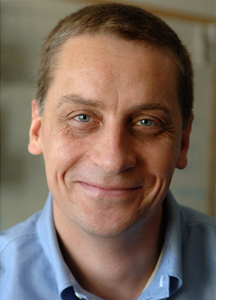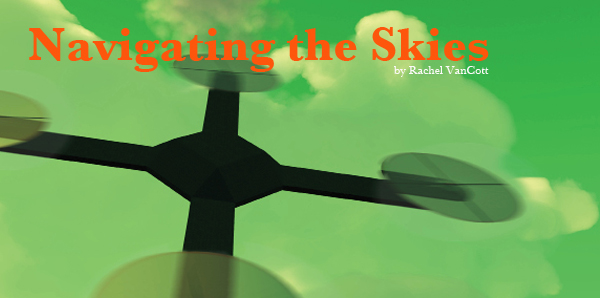A fleet of unmanned aerial vehicles is flying on a military surveillance mission. There's no central controller, and no human hand directing the vehicles as they zoom over the landscape. Instead, each of the agents navigates according to an algorithm--a set of rules and assumptions. Members of the networked fleet send messages back and forth wirelessly and the fleet ticks through the mission checklist, task after task.
At least, that's how events would play out in a simulation.In the real world, however, missions are plagued by the unexpected. Communications between members of the fleet might be jammed, or just fail. One vehicle might become disabled. Another might sense new information that could drastically impact the mission. The workload may need to be rebalanced across the fleet. But no one vehicle within a distributed multi-agent system like the one described has the authority to decide what the group will do. So how can a decentralized fleet make decisions in the moment, and cope with the uncertainty of real world?
This is one of many types of problems that MIT Professor Jonathan How finds interesting. The Aeronautics and Astronautics professor has spent most of his career working on problems that have both a strong theoretical component and also clear utility—problems that demand theoretical frameworks that can withstand the challenging unpredictability of real-world situations.
To the average person, the importance of using theoretical techniques to solve real-world problems seems obvious. But applied work isn't always popular within the research community. Even a few years ago Jon notes other researchers might have looked down on applied problems like those he solves, preferring instead to focus on pure theory. In more recent times however, Jon said he's seen a shift in his field—a larger number of scientists and engineers are recognizing that the chasm between theory and application is worth bridging, and that working in that area can offer undeniable value to funding agencies.
Jon's research group at MIT, the Aerospace Controls Laboratory, specializes in solving problems that lay in the overlap between theory and application, just as he does.
"We have more theory than a lot of groups that do application and more application than a lot of folks that do theory," said Jon, "that doesn't mean that every student is necessarily doing both well, but as a group we're able to communicate with each other well and work together as a group and accomplish more as a unit than we would individually…within the combination, we're better than most."
Jon notes that even though he's interested in applied problems, the complexity of the work, not just the application, is a big motivating factor. "The reason you get up in the morning," he says, "is the challenge of figuring it out. Can we do this? Can we make this work?"
In the case of the networked autonomous aerial vehicles described earlier, Jon's answer was a qualified "yes." For this problem, Jon and his students proposed an algorithm that could efficiently handle situations of distributed decision making in unmanned vehicle networks. The algorithm, known as the consensus-based bundle algorithm, or CBBA, offers a faster way for multi-agent systems to come to an agreement on what's happening in the world and how the agents should redistribute or scale down mission tasks based on that common understanding. That means that even when the going gets rough, the fleet can still accomplish some of the mission objectives.
Jon is also responsible for the development of a novel facility that makes it easier and faster for researchers to bring their theoretical solutions out of simulation and into a more realistic environment, and also prototype new hardware. This facility, created in 2007 as part of collaborative work with the Boeing Corporation, is known as the Real-time Indoor Autonomous Vehicle Test Environment, or RAVEN for short. The facility is outfitted with motion capture cameras that track a vehicle's every move, and also features a test-bed of vehicles on which algorithms can be deployed. The conditions in RAVEN are less unpredictable than in the real world, where the environment can change from day to day, or even hour to hour, but it's still more realistic than simulating conditions entirely within a computer. "[RAVEN] has limitations," said Jon, "and yet it's a step up… It's a place in which I can do stuff in hardware as a stepping stone to where I'd like to do it, which is outdoors." RAVEN has proven such a success for the Aerospace Controls Laboratory that, Jon says, other facilities like it have been built in academic and national laboratories across the country.
Jon has made his academic career in part by proposing ways for autonomous vehicles to solve planning problems—hard decisions that must be made in sub-optimal conditions. But he describes his own navigation through life as a series of comfortable choices. Each decision flowed naturally from the last. "I never really felt like I had to sit there and think: what should I be doing?" Jon said, "It was obvious. When I look back it seems inevitable."
Jon's family moved frequently when he was a child because of his father's job within the United Kingdom's Royal Air-Force. Even after his father retired from the military and the family moved to Canada, they kept moving.
As a young man in high school, Jon didn't know any scientists or engineers. So when the time came for him decide what to study in college, he just chose to study what he liked—mathematics and engineering science—in a subject area with which he was familiar—aerospace. In college, he met graduate students and learned about career options in science. He came to MIT for his Master's Degree and PhD and was subsequently offered a post-doctoral position at MIT and then a professorship at Stanford University. Just as he was looking for a change, he was asked to come back and be a professor at MIT. At MIT, Jon found his work emphasis shifting to information gathering, environmental modeling and uncertainty reduction in multi-agent systems. Naturally, his connection to the theory-rich Laboratory for Information and Decision Systems strengthened.
Most recently, Jon and a team of professors from MIT and several other universities received funding the National Science Foundation to explore how multi-agent systems could be used to observe environmental phenomenon, like weather patterns over the Pacific Ocean. The project grew into a related work, funded by the Office of Naval Research, for which the researchers started studying similar systems in adversarial environments. As usual, this new project is a blend of theoretical planning problems and practical application. The specific application may change, but the invigorating challenge of figuring things out is always there in the background.
"I was trying to describe to somebody once what it's like to have this job," Jon said, "You get paid to learn, and you never really have to stop learning."




